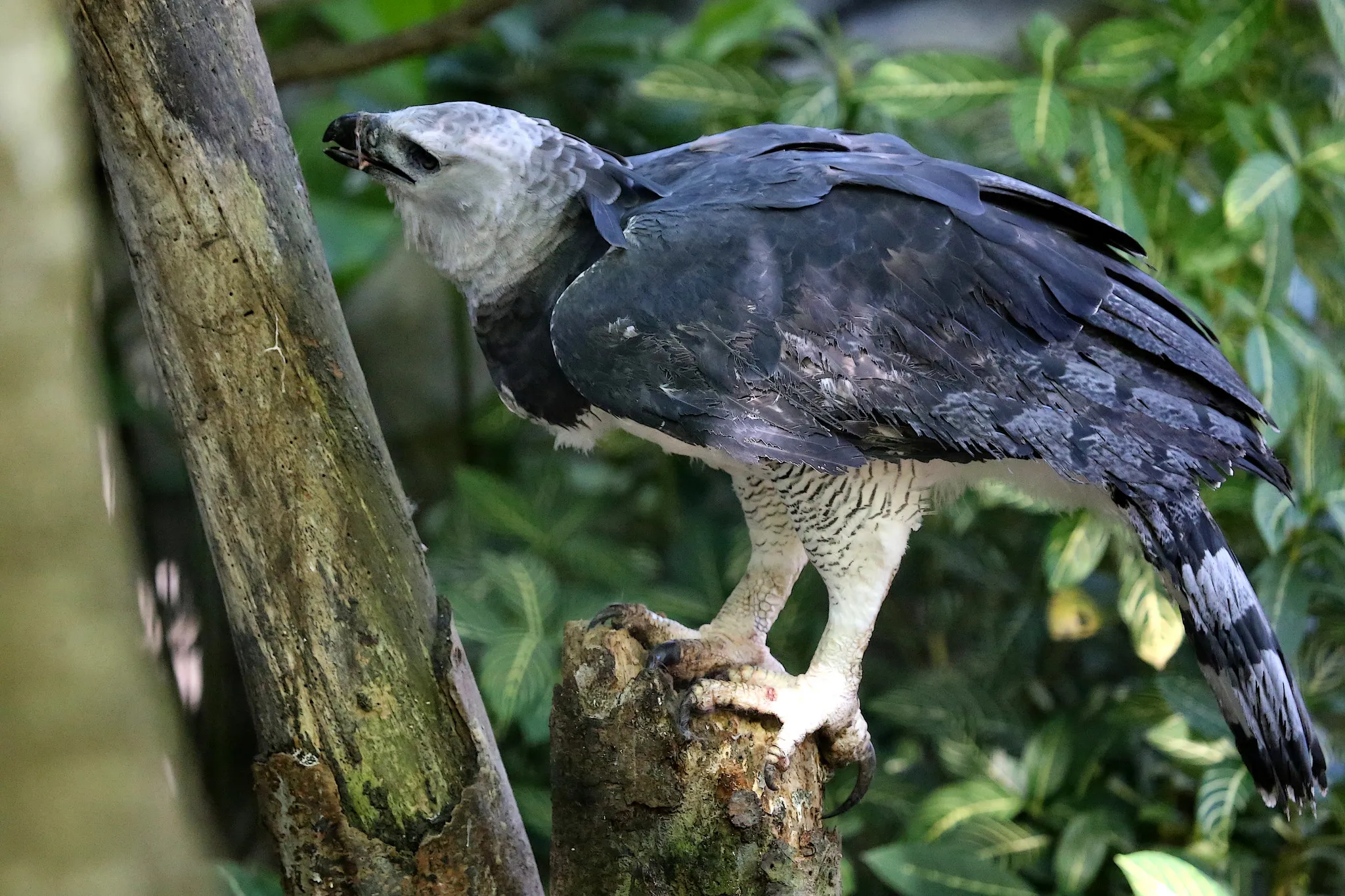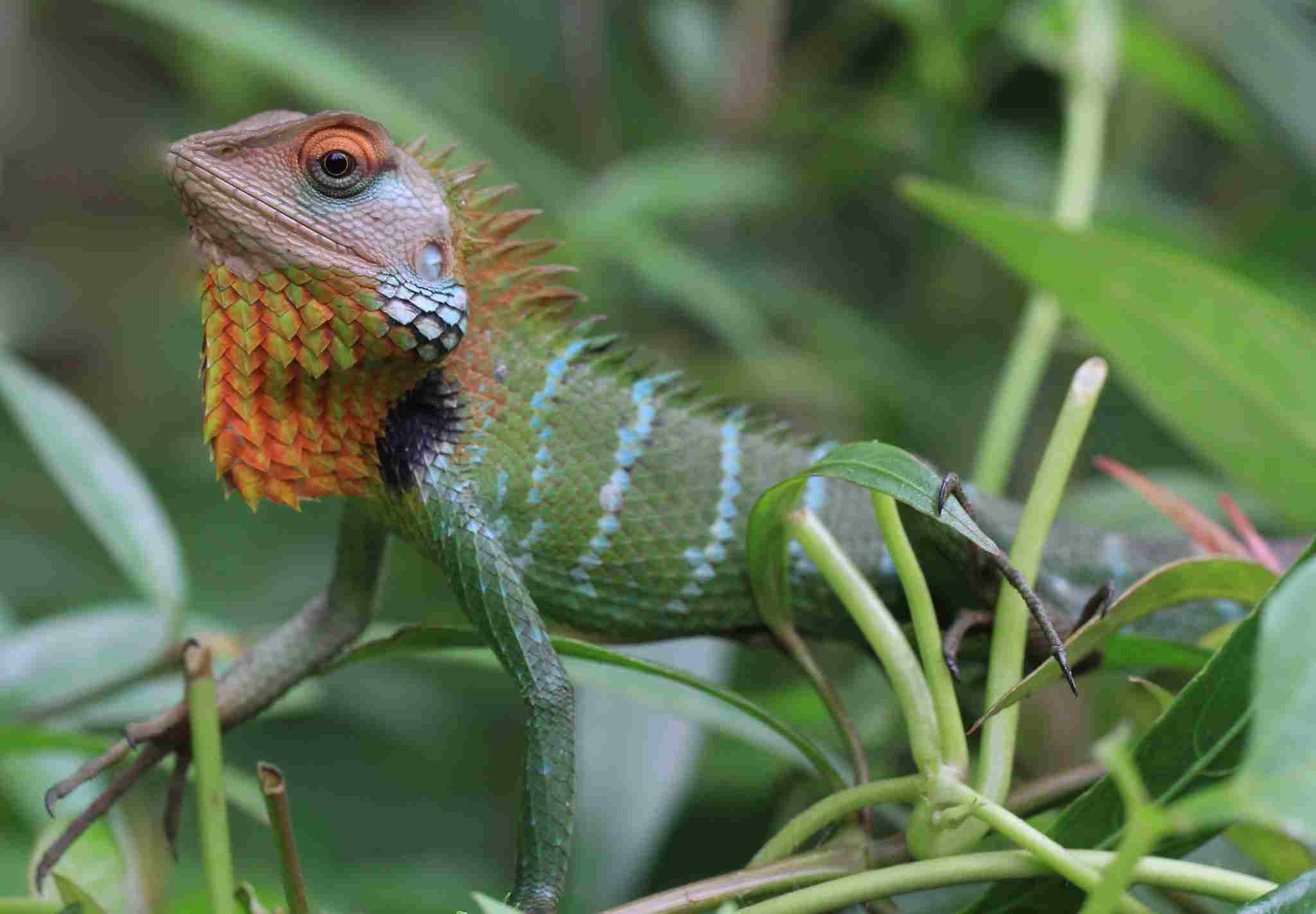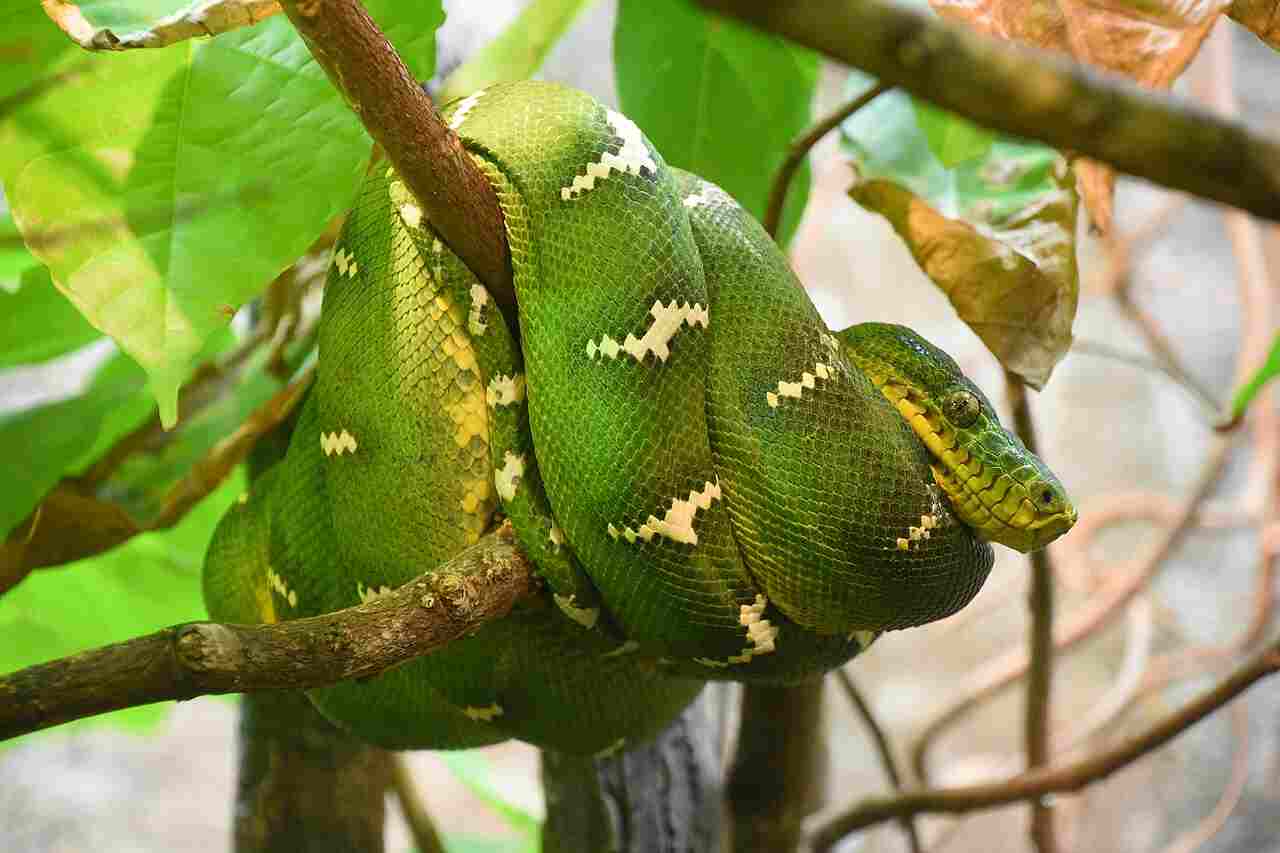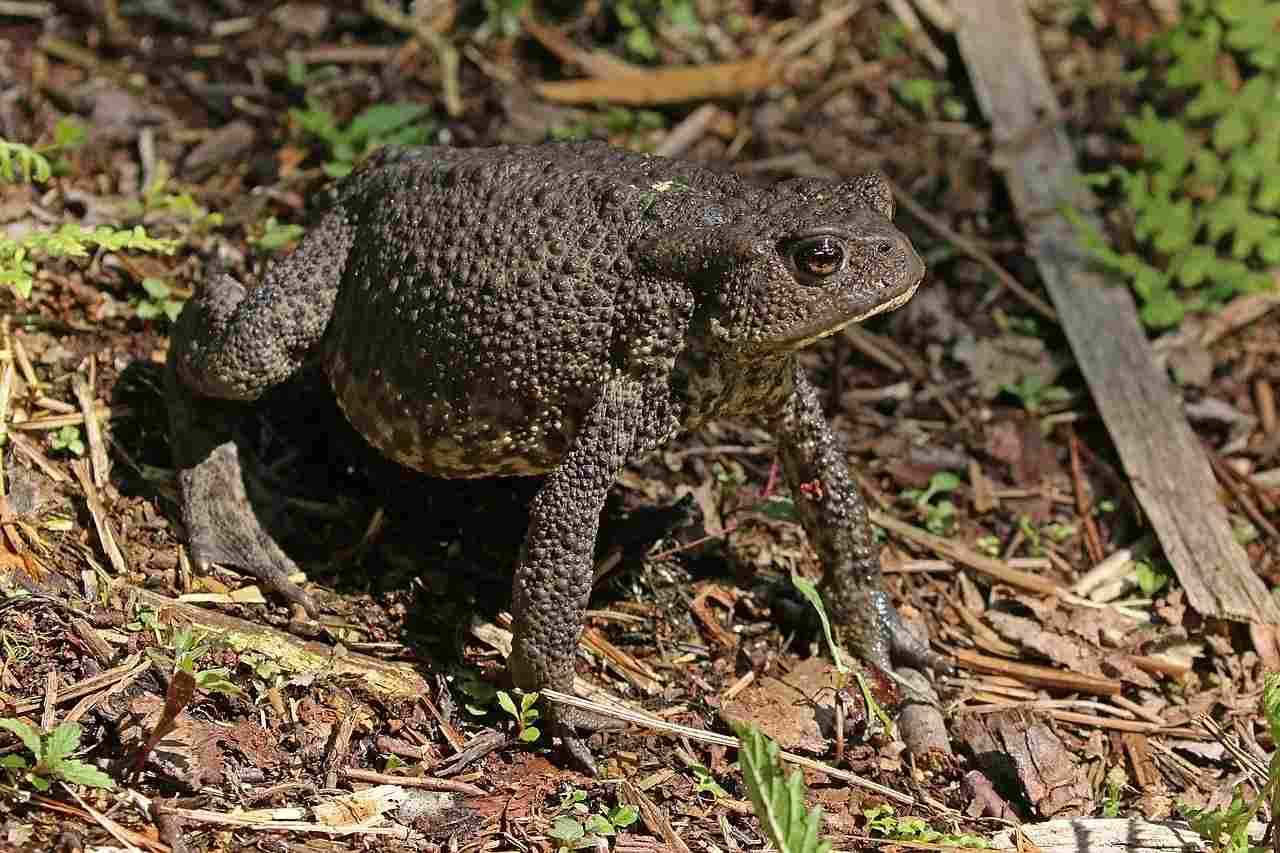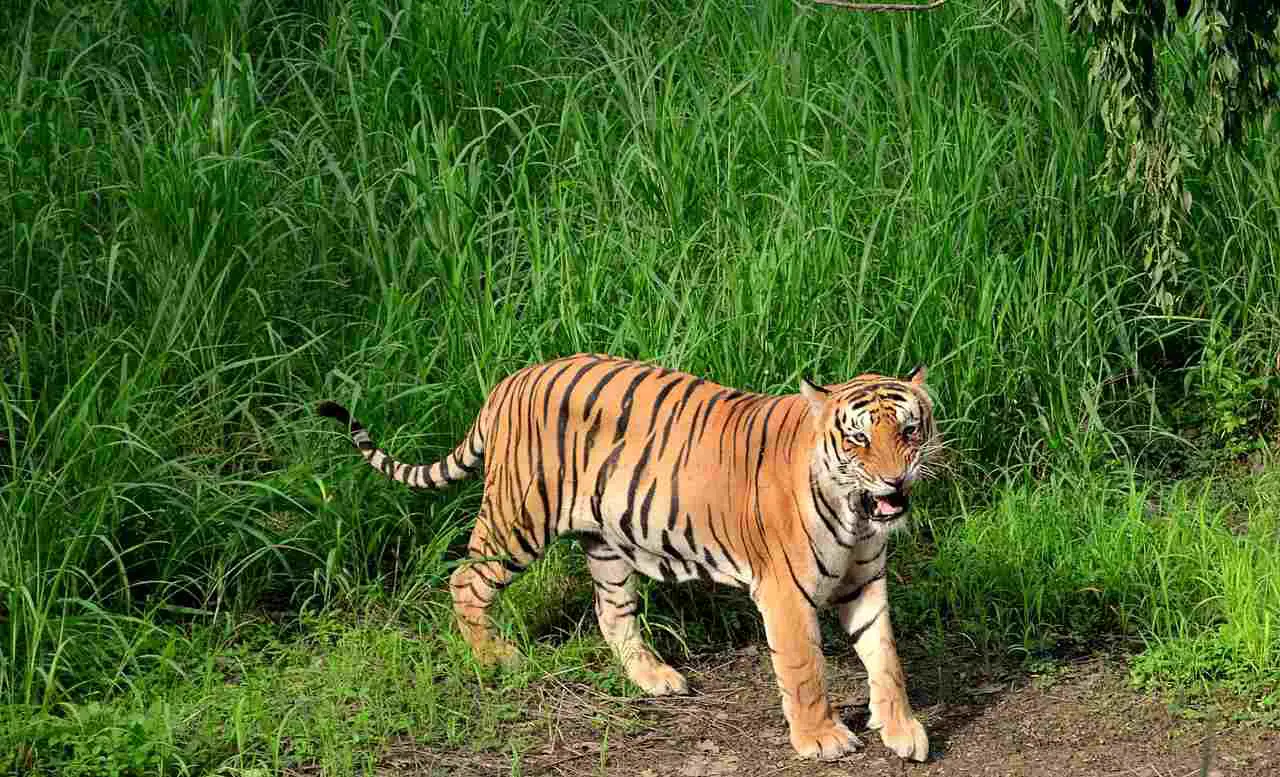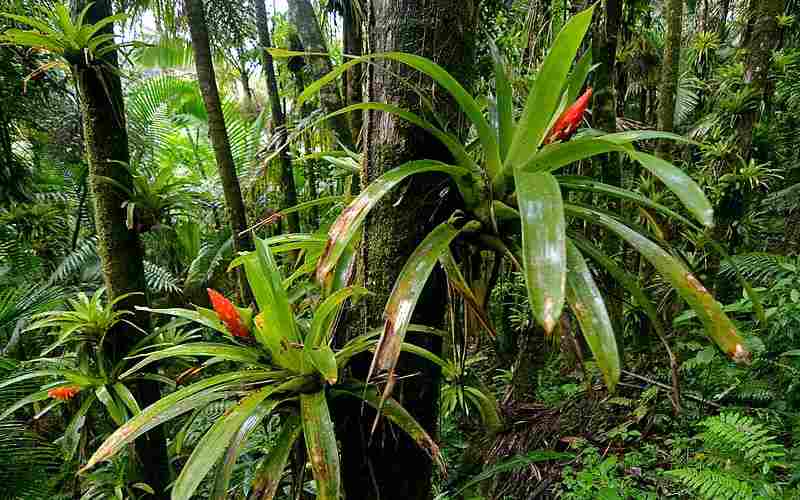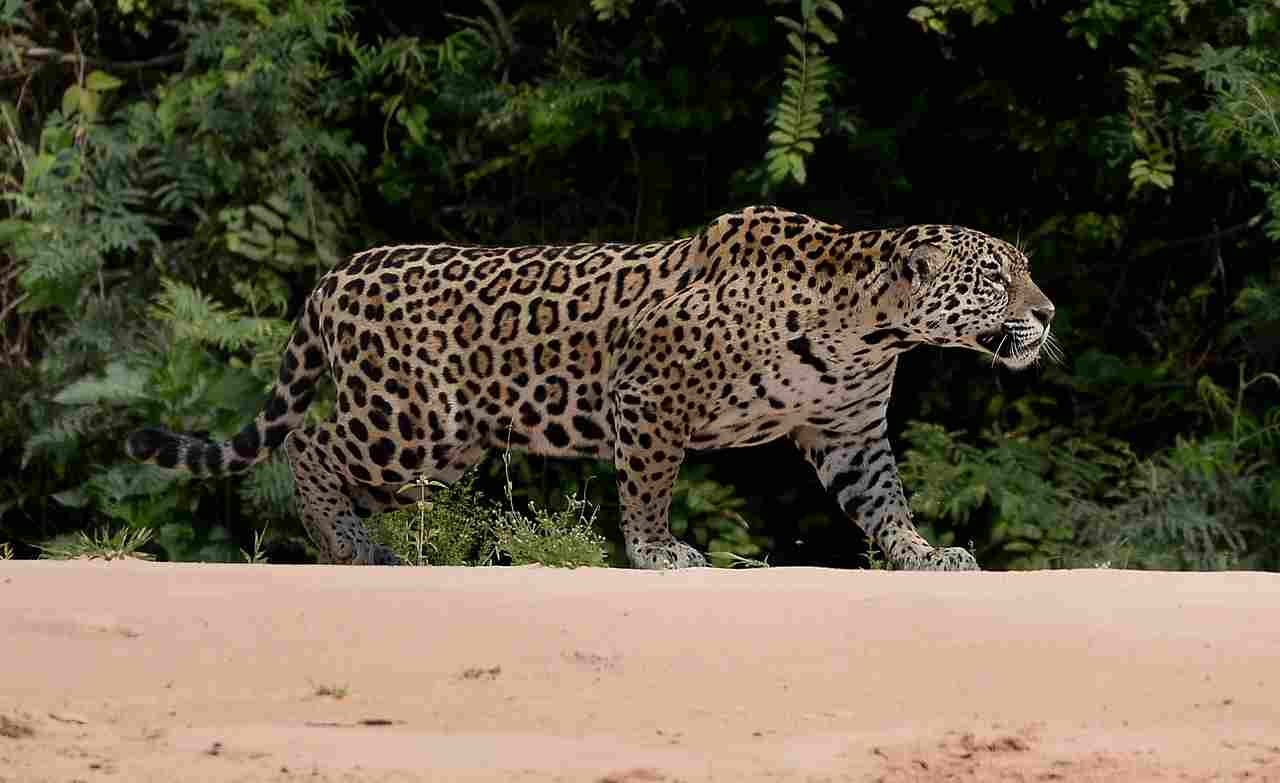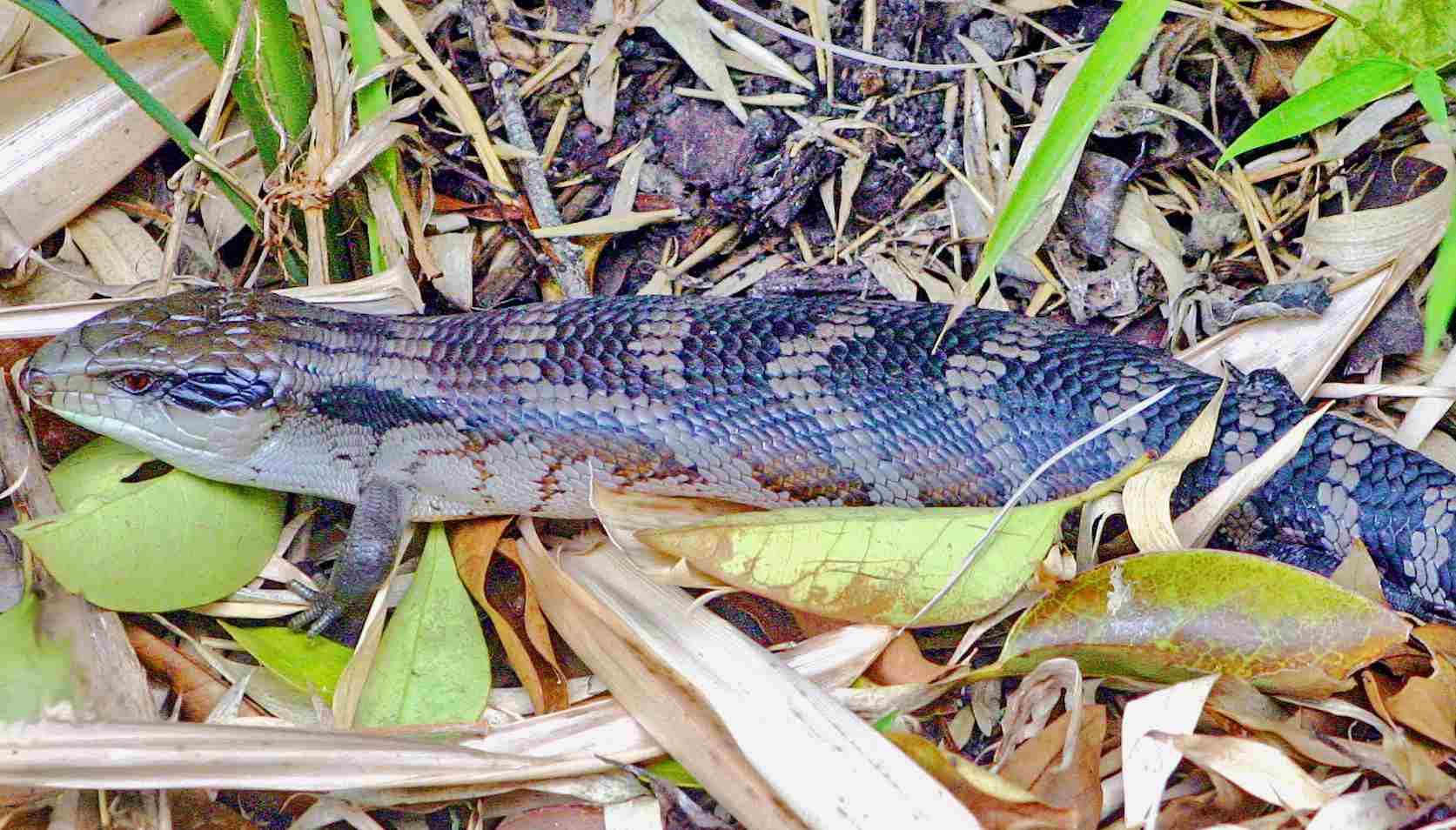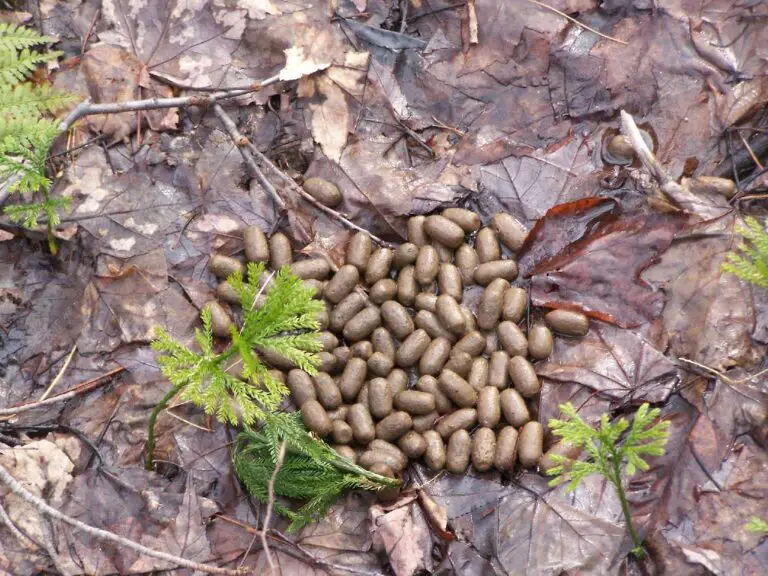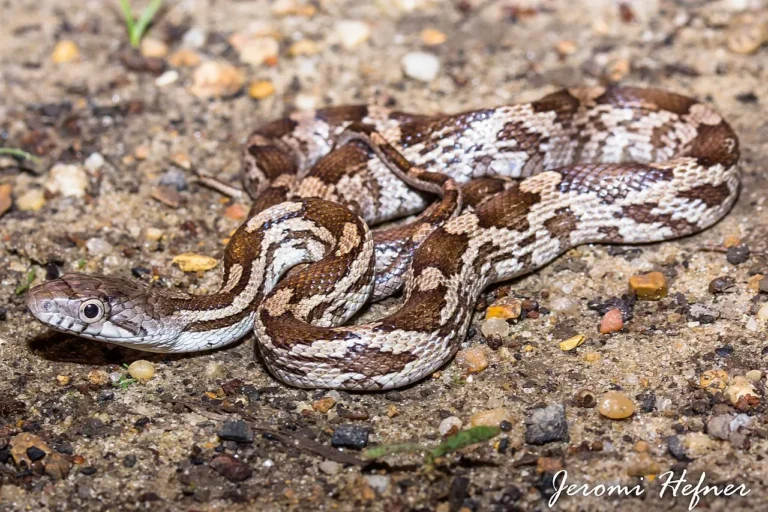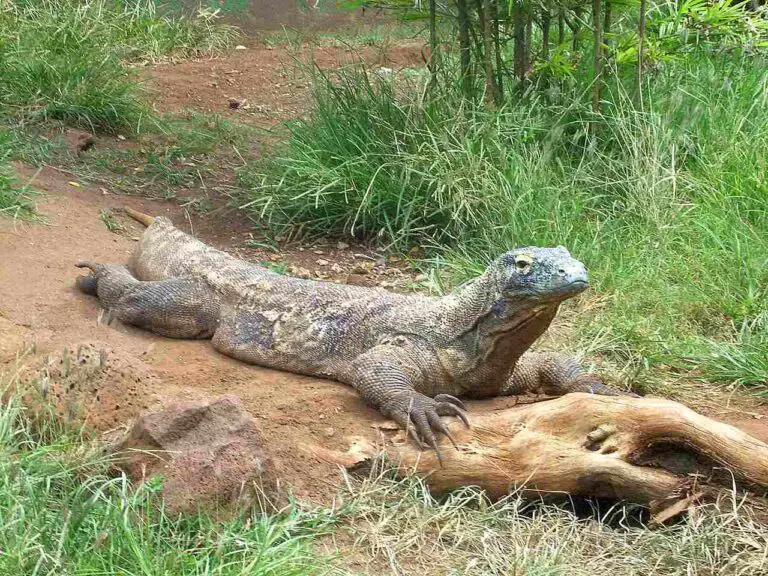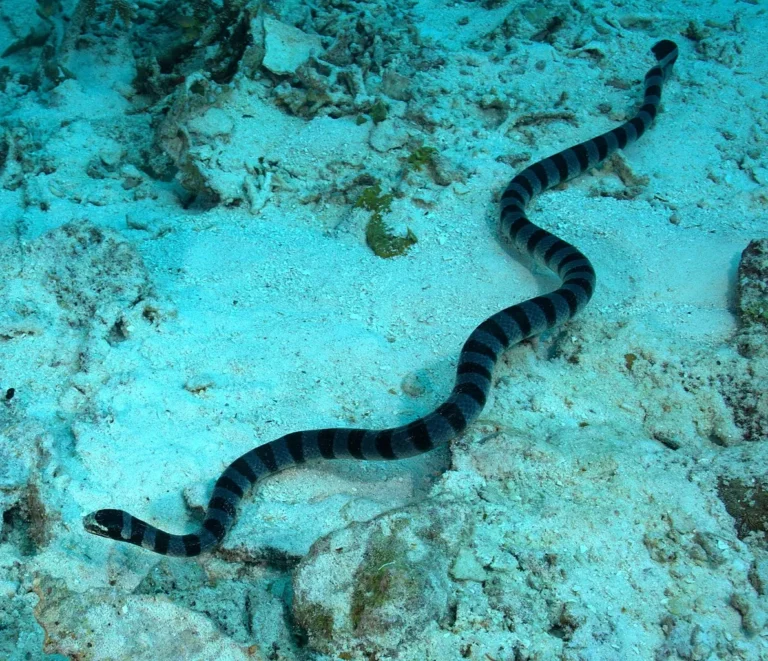8+ Carnivores in The Tropical Rainforest Discussed
Carnivores in the tropical rainforest are vital components of the ecosystem, playing crucial roles in regulating prey populations and maintaining biodiversity. Among them are the apex predator, the jaguar, known for its strength and stealth, alongside the adaptable puma, capable of hunting a variety of prey. The majestic tiger, primarily found in Southeast Asia, also inhabits these lush environments. Additionally, frogs and lizards contribute to controlling insect populations, while the formidable piranha patrols the waterways. Giant condors soar above, scavenging and hunting, while caimans lurk as formidable aquatic predators, completing the diverse carnivorous ecosystem.
1. Jaguar
The jaguar, known scientifically as Panthera onca, stands as one of the apex predators of the tropical rainforest, wielding both power and stealth in its pursuit of prey. With its distinctive golden coat adorned with rosette patterns, the jaguar prowls the dense foliage with unmatched agility and strength. Inhabiting the dense jungles of Central and South America, this magnificent feline commands respect from both its prey and fellow predators.
Equipped with incredibly powerful jaws, the jaguar boasts a fearsome bite force, allowing it to take down large prey with ease. Its diet consists primarily of medium to large-sized mammals, including deer, peccaries, and capybaras. However, the jaguar is an adaptable hunter, known to ambush a wide variety of prey, including fish, reptiles, and even other predators like caimans and anacondas.
Despite its solitary nature, jaguars maintain large home ranges, patrolling vast territories in search of food and mates. Their keen senses of sight and hearing, coupled with their ability to move silently through the forest undergrowth, make them formidable hunters, capable of striking swiftly and decisively. However, habitat loss and human encroachment pose significant threats to jaguar populations, pushing these magnificent creatures to the brink of extinction in some regions. Efforts to conserve their habitats and mitigate human-wildlife conflicts are crucial in ensuring the survival of these iconic carnivores in the tropical rainforest ecosystem.
2. Puma
The puma, also known as the cougar or mountain lion, roams the tropical rainforest with an air of grace and stealth. As the second-largest cat in the Americas, after the jaguar, the puma commands a formidable presence in its lush habitat. With its sleek, tawny coat and powerful physique, the puma embodies agility and strength, making it a top predator in the forest ecosystem.
Unlike many other large cats, pumas have adapted to a wide range of habitats, from dense forests to arid deserts, displaying remarkable versatility in their hunting strategies. With keen eyesight and exceptional leaping ability, they stalk their prey with precision, often ambushing deer, wild boar, and smaller mammals like rodents and monkeys.
Pumas are solitary creatures, with males occupying large home ranges that overlap with the territories of several females. They are highly territorial and mark their boundaries with scent markings and vocalizations to deter intruders. Despite their solitary nature, pumas are not strictly nocturnal and may be active during the day or night, depending on their hunting patterns and environmental conditions.
As apex predators, pumas play a crucial role in regulating prey populations and maintaining the balance of the ecosystem. However, like many carnivores, they face threats from habitat loss, fragmentation, and human-wildlife conflicts. Conservation efforts aimed at protecting puma habitats and promoting coexistence with human communities are essential for ensuring the long-term survival of these magnificent predators in the tropical rainforest.
3. Tiger
The tiger, with its majestic presence and distinctive striped coat, once roamed the dense rainforests of Southeast Asia in great numbers. Though primarily associated with other habitats like grasslands and mangrove swamps, some tiger subspecies, like the Indochinese tiger, inhabit tropical rainforest regions.
As the largest of all cats, tigers are apex predators, commanding both fear and respect in their domain. Their striking orange fur, punctuated by bold black stripes, serves as camouflage in the dappled sunlight of the forest understory, allowing them to stalk their prey with stealth and precision.
Tigers are opportunistic hunters, preying on a variety of animals, including deer, wild boar, and even large predators like leopards and pythons. With their powerful jaws and muscular bodies, they can bring down prey many times their size, making them one of the most formidable carnivores in the rainforest ecosystem.
Despite their strength and prowess, tigers face numerous threats to their survival, including habitat loss, poaching, and human-wildlife conflicts. Conservation efforts aimed at protecting tiger habitats, combating illegal poaching and trade, and promoting coexistence with local communities are crucial for ensuring the survival of these iconic predators in the tropical rainforest.
4. Frog
In the intricate web of life within the tropical rainforest, frogs emerge as stealthy predators in their own right, albeit on a smaller scale. While not the apex predators like the big cats or birds of prey, frogs play a crucial role in controlling insect populations and contributing to the overall balance of the ecosystem.
Numerous frog species inhabit the lush rainforest environment, each with its own specialized adaptations for hunting and survival. From brightly colored poison dart frogs to cryptic tree frogs, these amphibians have evolved a variety of strategies to capture their prey, ranging from ambush predation to active foraging.
Many rainforest frogs are nocturnal, taking advantage of the cover of darkness to hunt for insects, spiders, and other small invertebrates. Their sticky tongues, propelled with lightning speed, allow them to snatch unsuspecting prey with precision and efficiency. Some frog species, like the famous red-eyed tree frog, employ visual cues to detect and capture prey, relying on their keen eyesight to locate movement in the dimly lit forest canopy.
Despite their relatively small size, frogs face numerous threats in the rainforest, including habitat destruction, pollution, and climate change. Loss of forest cover and disruption of delicate ecosystems can have cascading effects on frog populations, leading to declines in both predator and prey species. Conservation efforts aimed at preserving rainforest habitats and mitigating human impacts are essential for ensuring the survival of these fascinating amphibians in the tropical rainforest.
5. Lizard
Lizards are a diverse group of reptiles that thrive in the warmth and humidity of the tropical rainforest. From tiny geckos to formidable monitor lizards, these scaly predators have adapted to a wide range of habitats and hunting strategies, making them integral components of the rainforest ecosystem.
Armed with sharp claws, powerful jaws, and keen senses, rainforest lizards are skilled hunters, preying on insects, spiders, small mammals, and even other lizards. Some species, like the iconic green iguana, are primarily herbivorous, feeding on fruits, leaves, and flowers, while others, such as the ferocious Komodo dragon, are apex predators capable of taking down large prey with their formidable size and strength.
Lizards employ a variety of hunting techniques, from stealthy ambushes to active pursuit, depending on their size, morphology, and ecological niche. Many species are highly adaptable, capable of thriving in disturbed habitats and even urban environments, where they may prey on pests and contribute to ecosystem services.
Despite their adaptability, rainforest lizards face threats from habitat loss, climate change, and invasive species. Destruction of rainforest habitat fragments populations and disrupts critical ecological interactions, jeopardizing the survival of both lizards and their prey. Conservation efforts aimed at protecting rainforest habitats and mitigating human impacts are essential for ensuring the long-term survival of these fascinating reptilian predators in the tropical rainforest.
6. Emerald Tree Boa
The Emerald Tree Boa, scientifically known as Corallus caninus, is a mesmerizing carnivore found in the dense canopies of the tropical rainforests of South America, predominantly in the Amazon basin. With its vivid green coloration and distinctive coiled resting position on tree branches, this arboreal snake is a striking sight. Despite its serene appearance, the Emerald Tree Boa is a formidable predator, primarily feeding on small mammals, birds, and occasionally other reptiles.
One of the most remarkable adaptations of the Emerald Tree Boa is its prehensile tail, which assists in gripping branches as it moves through the trees with remarkable agility. Its cryptic green coloration provides excellent camouflage amidst the foliage, enabling it to ambush unsuspecting prey. Utilizing a sit-and-wait hunting strategy, the boa patiently awaits the opportune moment to strike, relying on its powerful constriction to subdue prey.
Despite its predominantly solitary nature, encounters between Emerald Tree Boas may occur during the breeding season. Females give birth to live young rather than laying eggs, a characteristic shared by only a few snake species. While not directly threatened by many predators due to its position high in the canopy, habitat loss and illegal collection for the pet trade pose significant threats to the long-term survival of this captivating species.
7. Harpy Eagle
The Harpy Eagle, known scientifically as Harpia harpyja, reigns as one of the largest and most powerful birds of prey in the world, earning its place as an apex predator in the tropical rainforests of Central and South America. Named after the mythical creature with the body of an eagle and the face of a human, the Harpy Eagle strikes an imposing figure with its robust build, striking black-and-white plumage, and distinctive crown of feathers atop its head.
This formidable raptor possesses a wingspan of up to seven feet, allowing it to soar effortlessly through the dense forest canopy in pursuit of prey. Harpy Eagles are specialized hunters, primarily targeting medium-sized mammals such as sloths, monkeys, and even young deer. With their keen eyesight and powerful talons, they can swoop down with astonishing speed and accuracy to capture prey, often delivering a fatal blow with a single strike.
Despite its status as a top predator, the Harpy Eagle faces numerous threats, including habitat loss, fragmentation, and persecution by humans. Due to their large territorial requirements, these magnificent birds are particularly vulnerable to deforestation and habitat degradation. Conservation efforts aimed at preserving their habitat and mitigating human-wildlife conflict are crucial for ensuring the survival of the Harpy Eagle and the ecological integrity of the tropical rainforests they call home.
8. Piranha
Piranhas are infamous inhabitants of the tropical rainforest’s waterways, renowned for their sharp teeth and voracious feeding behavior. Found primarily in the Amazon basin and other freshwater habitats throughout South America, piranhas are carnivorous fish that play a crucial role in the aquatic food web.
Despite their fearsome reputation, piranhas are opportunistic feeders, scavenging on carrion as well as hunting live prey. Their razor-sharp teeth and powerful jaws allow them to tear through flesh with ease, making them efficient predators of fish, insects, crustaceans, and even small mammals or birds that venture too close to the water’s edge.
Piranhas often hunt in groups, known as shoals, where they can overwhelm larger prey with sheer numbers and coordinated attacks. Despite their aggressive feeding behavior, piranhas are also preyed upon by larger fish, birds, and mammals, which helps regulate their populations and maintain balance in the ecosystem.
While piranhas are well adapted to their freshwater habitats, they face threats from habitat degradation, overfishing, and pollution. Deforestation and dam construction disrupt the natural flow of rivers, fragmenting habitats and reducing the availability of suitable spawning grounds for piranhas. Sustainable management practices and conservation efforts are crucial for protecting these iconic carnivorous fish and preserving the biodiversity of the tropical rainforest’s aquatic ecosystems.
9. Giant Condor
The giant condor, with its massive wingspan and soaring flight, epitomizes the grandeur of the tropical rainforest’s skies. Found in the Andean regions of South America, including parts of Ecuador, Peru, and Chile, these majestic birds of prey play a vital role in the ecosystem as scavengers and apex predators.
With wingspans reaching up to three meters or more, giant condors are among the largest flying birds in the world, capable of soaring effortlessly on thermal currents in search of carrion and prey. While primarily scavengers, feeding on the carcasses of large mammals like deer, guanacos, and llamas, they are also opportunistic hunters, preying on small mammals, birds, and reptiles when the opportunity arises.
Giant condors are highly social birds, often gathering in large flocks at feeding sites or roosting in communal nests on rocky cliffsides. Their keen eyesight and powerful beaks allow them to detect and consume carrion from great distances, making them invaluable members of the rainforest’s scavenger guild.
Despite their impressive size and aerial prowess, giant condors face threats from habitat loss, poaching, and collisions with power lines and wind turbines. Conservation efforts aimed at protecting their habitats, reducing human-wildlife conflicts, and mitigating the impacts of human activities on their populations are essential for ensuring the survival of these magnificent birds in the tropical rainforest.
10. Caiman
Caimans are formidable predators that lurk in the murky waters of the tropical rainforest’s rivers, swamps, and wetlands. As members of the crocodilian family, caimans are well adapted to their aquatic habitats, with streamlined bodies, powerful jaws, and keen senses that make them efficient hunters in both water and land.
Found throughout Central and South America, caimans play a crucial role in regulating aquatic ecosystems by controlling prey populations and scavenging on carrion. While primarily carnivorous, feeding on fish, amphibians, birds, and small mammals, they are also opportunistic feeders, preying on insects, crustaceans, and even fruits when necessary.
Caimans are apex predators in their aquatic habitats, capable of ambushing prey with lightning speed and precision. Their stealthy hunting techniques and powerful bite force make them formidable predators, capable of taking down prey many times their size.
Despite their ecological importance, caimans face threats from habitat loss, pollution, and overhunting for their skins and meat. Sustainable management practices and conservation efforts are essential for protecting caiman populations and preserving the biodiversity of the tropical rainforest’s aquatic ecosystems.
*Summary
Jaguar:
Apex predator with golden coat and rosette patterns.
Powerful jaws for hunting large mammals, fish, and reptiles.
Solitary nature with large home ranges, facing threats from habitat loss and human encroachment.
Puma:
Sleek predator with tawny coat, adaptable to various habitats.
Solitary hunters with wide prey range, including deer and smaller mammals.
Faces threats like habitat loss and human-wildlife conflicts, crucial for ecosystem balance.
Tiger:
Majestic striped predator primarily in Southeast Asia.
Largest cat species, preying on deer, wild boar, and even other predators.
Threatened by habitat loss, poaching, and human-wildlife conflicts, needing conservation efforts.
Frog:
Stealthy hunters in rainforest, controlling insect populations.
Various species with specialized adaptations, hunting insects and small invertebrates.
Threatened by habitat destruction and climate change, requiring conservation for ecosystem balance.
Lizard:
Diverse reptilian predators thriving in rainforest warmth.
Employing different hunting strategies, from insects to small mammals.
Threatened by habitat loss and invasive species, needing conservation for ecosystem health.
Piranha:
Carnivorous fish known for sharp teeth and group hunting.
Opportunistic feeders on fish, insects, and carrion, vital for aquatic food webs.
Faces threats from habitat degradation and overfishing, requiring sustainable management.
Giant Condor:
Massive scavengers and apex predators soaring over Andean regions.
Social birds feeding on carrion and hunting small prey.
Threatened by habitat loss and human activities, needing conservation for survival.
Caiman:
Formidable aquatic predators in rainforest rivers and wetlands.
Ambush hunters feeding on fish, amphibians, and small mammals.
Faces threats from habitat loss and overhunting, requiring conservation for ecosystem balance.
| Carnivores in Tropical Rainforest | Summary |
| Jaguar |
Apex predator with golden coat and rosette patterns. Powerful jaws for hunting large mammals, fish, and reptiles. Solitary nature with large home ranges, facing threats from habitat loss and human encroachment.
|
| Puma |
Sleek predator with tawny coat, adaptable to various habitats. Solitary hunters with wide prey range, including deer and smaller mammals. Faces threats like habitat loss and human-wildlife conflicts, crucial for ecosystem balance.
|
| Tiger |
Majestic striped predator primarily in Southeast Asia. Largest cat species, preying on deer, wild boar, and even other predators. Threatened by habitat loss, poaching, and human-wildlife conflicts, needing conservation efforts.
|
| Frog |
Stealthy hunters in rainforest, controlling insect populations. Various species with specialized adaptations, hunting insects and small invertebrates. Threatened by habitat destruction and climate change, requiring conservation for ecosystem balance.
|
| Lizard |
Diverse reptilian predators thriving in rainforest warmth. Employing different hunting strategies, from insects to small mammals. Threatened by habitat loss and invasive species, needing conservation for ecosystem health.
|
| Piranha |
Carnivorous fish known for sharp teeth and group hunting. Opportunistic feeders on fish, insects, and carrion, vital for aquatic food webs. Faces threats from habitat degradation and overfishing, requiring sustainable management.
|
| Giant Condor |
Massive scavengers and apex predators soaring over Andean regions. Social birds feeding on carrion and hunting small prey. Threatened by habitat loss and human activities, needing conservation for survival.
|
| Caiman |
Formidable aquatic predators in rainforest rivers and wetlands. Ambush hunters feeding on fish, amphibians, and small mammals. Faces threats from habitat loss and overhunting, requiring conservation for ecosystem balance.
|
Related FAQs
Q: What are some threats to carnivores in the tropical rainforest?
A: Carnivores in the tropical rainforest face various threats, including habitat loss due to deforestation and human encroachment, fragmentation of habitats, poaching for fur or body parts, depletion of prey species, human-wildlife conflicts, and climate change affecting food availability and habitat suitability.
Q: What role do carnivores play in the tropical rainforest ecosystem?
A: Carnivores play a crucial role in maintaining the balance of the tropical rainforest ecosystem by regulating prey populations, controlling herbivores, preventing overgrazing, and promoting biodiversity. They also contribute to nutrient cycling through predation and scavenging, which influences the structure and function of the ecosystem.
Q: How can we conserve carnivores in the tropical rainforest?
A: Conservation efforts for carnivores in the tropical rainforest involve protecting their habitats through establishing and managing protected areas, implementing sustainable land use practices, reducing human-wildlife conflicts, combating illegal hunting and trade, promoting coexistence with local communities, and raising awareness about the importance of carnivores in the ecosystem. Collaborative initiatives involving governments, conservation organizations, researchers, and local communities are essential for effective conservation strategies.
